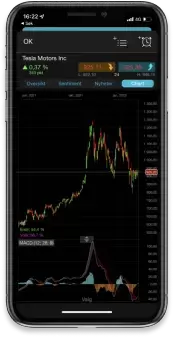European markets have started to lose a little bit of momentum in the last few days, as have markets in the US, which managed to close higher yesterday after two days of declines.
However, US markets slipped back in after-hours trading, after Treasury Secretary Steve Mnuchin announced that all Cares Act emergency programmes would expire at the end of this year, potentially putting the US economy at an economic cliff edge in the absence of a new fiscal package.
In the absence of a new fiscal package 12 million Americans would lose their unemployment benefits, while the Federal Reserve’s main lending programmes would also disappear. It is therefore welcome that stimulus talks look set to restart after comments by Senior Democrat Chuck Schumer, that he would be looking to restart talks with the Republicans Mitch McConnell in the face of surging coronavirus cases around the country.
While we’ve seen some decent gains in the past week or so on the back of recent reports about several vaccine candidates, markets appear to be turning their attention to more short-term factors, rather than the oasis in the distance that is the vaccine, and its delivery. The markets main focus now is not only how do we get to this oasis, but how many businesses will fall by the wayside before we get there, and what sort of economy will be left, if politicians don’t step up to the plate.
This may help explain why equity markets are now starting to lose a little bit of momentum, as extended shutdown concerns start to chip away at some of that optimism. The US CDC has already urged US citizens not to travel for Thanksgiving celebrations in a foretaste of what could be coming our way next month, unless virus cases start to come down, as we approach the Christmas period.
We all know that a good part of the answer to the question of what sort of economy will be left at the end of the first quarter of next year lies in the hands of central banks and politicians, and while central banks are still on the pitch, a lot of politicians, notably in the US and the EU, have decided to start to argue on the touch line, while their team is 3-0 down with 30 minutes to go.
In the US, politicians there are still no nearer a new fiscal stimulus plan, with the US Treasury calling time on the Cares Act by year end, despite yesterday’s sharp rise in weekly jobless claims, while the EU recovery plan was vetoed by Hungary and Poland yesterday, and as such remains no nearer being passed than it was in the summer when it was initially thrashed out between France and Germany. Taking the football analogy I used earlier a little further, this is akin to taking the ball back down towards your own goal and sticking it in your own net, to put you even further behind, as the clock ticks down.
For all the criticism of the UK government in recent weeks, particularly over their penny-pinching approach to local lockdown packages, there does now appear to be an acknowledgement that more needs to be done on the fiscal side, and the recent announcements from the prime minister Boris Johnson appear to suggest the government is now starting to think on a much longer-term basis, even if some of the detail appears to be based more on wishful thinking than anything else.
Public sector borrowing for September saw another big rise of £35.4bn, bringing total borrowing for the year so far to just over £200bn. A lot is being made of the amount of money being spent, especially since these numbers look set to continue for months to come, with concerns being raised in some quarters of how all of this will eventually be paid for. These are valid concerns and may well be behind some of the government’s recent missteps around funding certain areas of the economy, including quibbling over the costs of children’s school meals and regional lockdowns.
The recent decision to extend the furlough scheme until March next year, in the wake of the lockdown of England for the whole of November, is only likely to add to these costs, along with the recent reports that the government intends to embark on a green revolution. For now, markets aren’t overly concerned about this given the UK isn’t actually alone with respect to facing these problems, with October borrowing expected to see another big increase, of about £31.5bn.
As far as UK retail sales are concerned, we have seen a more positive story with consumers helping to drive a decent rebound in Q3. Since the lockdown in April we’ve seen five consecutive months of decent gains, however this could well be as good as it gets for retail spending as we head into year-end, given recent steps by the government in re-imposing lockdown restrictions throughout certain parts of the country. In September, retail sales increased 1.5%, however recent third-party studies have been somewhat mixed, with some suggesting a sharp slowdown in the October numbers, while others like the latest British Retail Consortium sales survey, showed a pre-lockdown surge which pushed the numbers higher ahead of the November lockdown.
On the down side, pub and restaurant sales saw a decline of 33% as tighter lockdown restrictions hit demand. Whatever the number for October, and expectations are for a -0.3% decline, it is likely to be a last hurrah, before we see an even sharper slide in the November numbers, a month from now. One thing seems certain: Q4 is likely to slow sharply from the resilience in Q3.
The pound continues to get chopped around by mixed news from EU/UK trade negotiations, after one of the EU negotiators tested positive for Covid-19, causing the talks to be briefly suspended, before restarting in an online format. Talk of a possible deal on Monday has continued to do the rounds, while French president, Emmanuel Macron, added to the uncertainty by urging EU leaders to prepare for a no-deal.
EUR/USD – has continued to edge up towards the 1.1900 area and trend line resistance from the September highs. The bias still remains for a drift back down towards the 1.1750 level, while below the 1.1900 area, however a break above 1.1920 could see 1.2000. A move below 1.1750 opens up a return to the 1.1680 level, and then the lows this month at 1.1600.
GBP/USD – had another look at the 1.3315 level earlier this week but have so far been unable to break above it. We need to move through 1.3320 to target the 1.3420 area. Support currently comes in at the 1.3170 area, while below that at last week’s low at 1.3106.
EUR/GBP – bias remains for a move back towards the 0.8860 lows, while below the 0.9000 area. We need to move up beyond trend line resistance near the 0.9020 area to stabilise and signal a retest of the 0.9080 area and 50-day MA.
USD/JPY – while below the 104.30 level the bias remains for a move back to the lows this month at 103.18. A move back above 104.30 retargets the 105.00 area.
Disclaimer: CMC Markets is an execution-only service provider. The material (whether or not it states any opinions) is for general information purposes only, and does not take into account your personal circumstances or objectives. Nothing in this material is (or should be considered to be) financial, investment or other advice on which reliance should be placed. No opinion given in the material constitutes a recommendation by CMC Markets or the author that any particular investment, security, transaction or investment strategy is suitable for any specific person. The material has not been prepared in accordance with legal requirements designed to promote the independence of investment research. Although we are not specifically prevented from dealing before providing this material, we do not seek to take advantage of the material prior to its dissemination.







